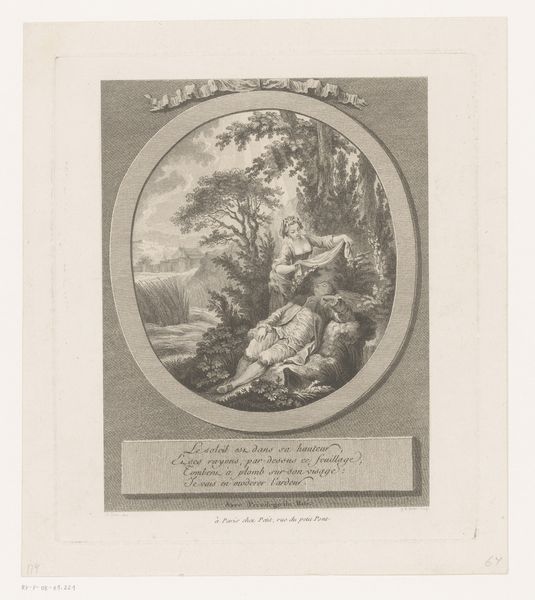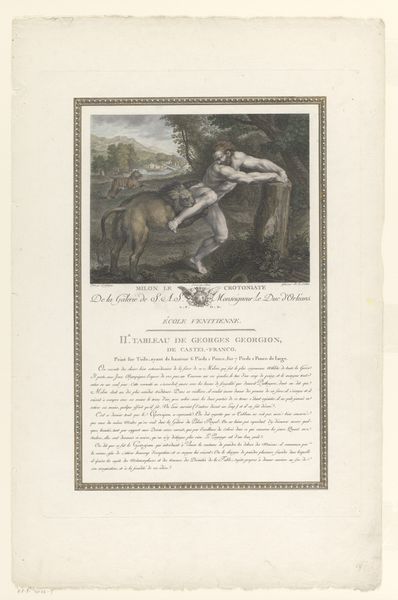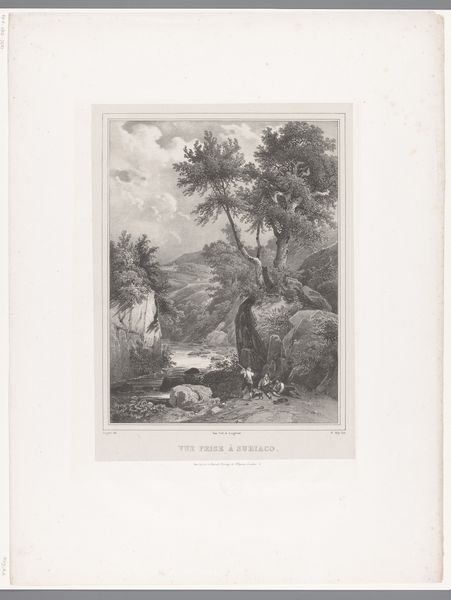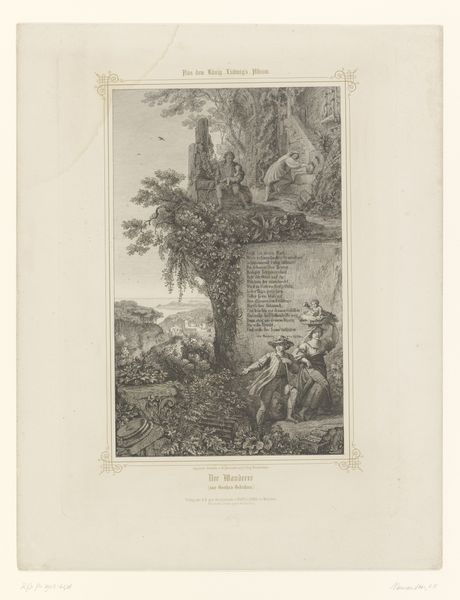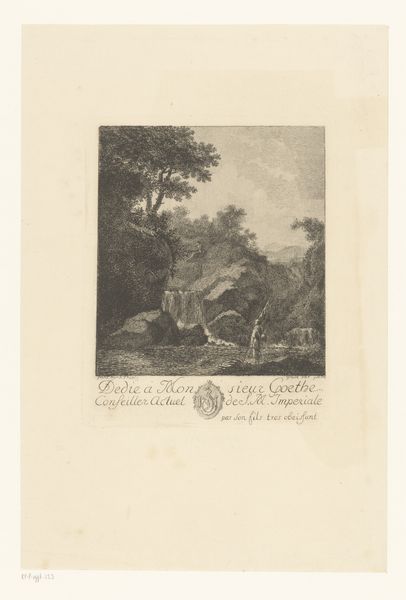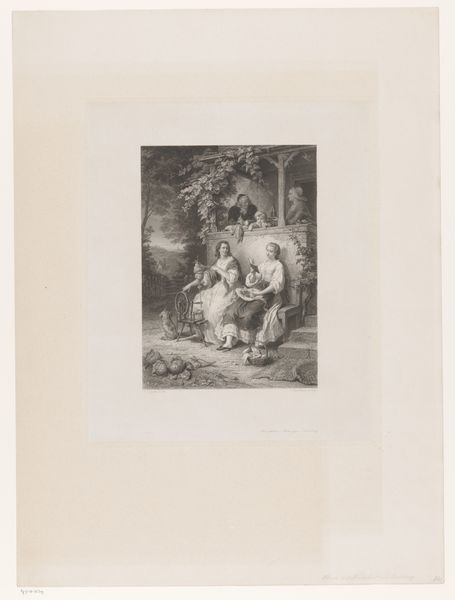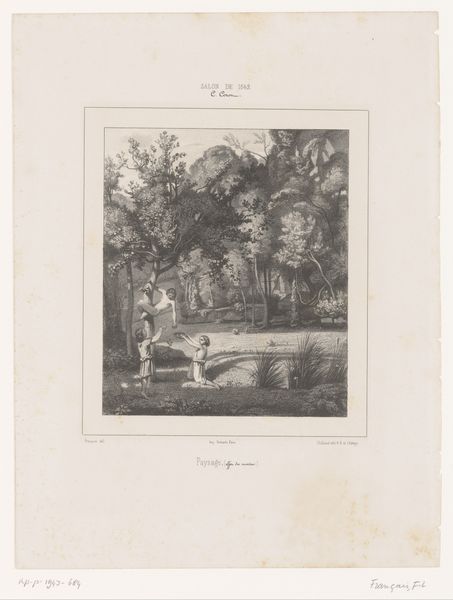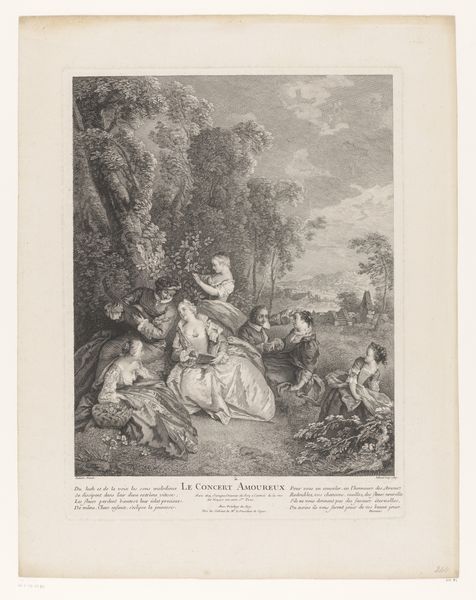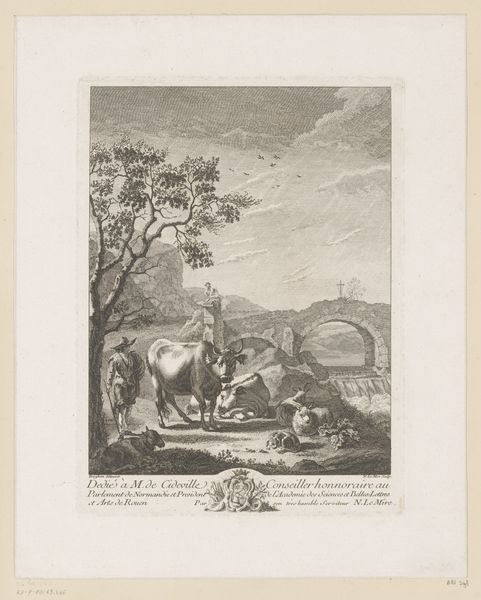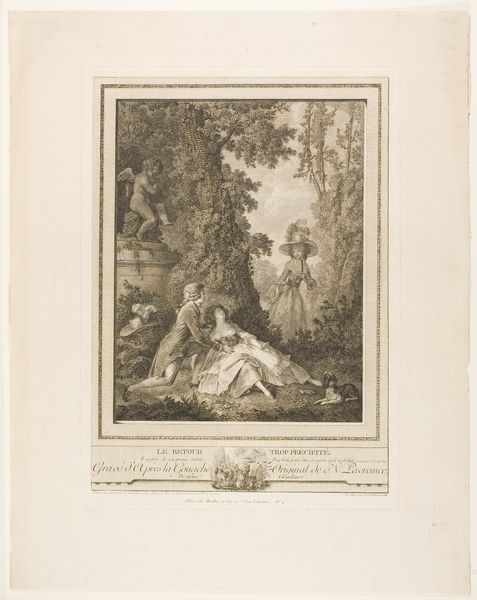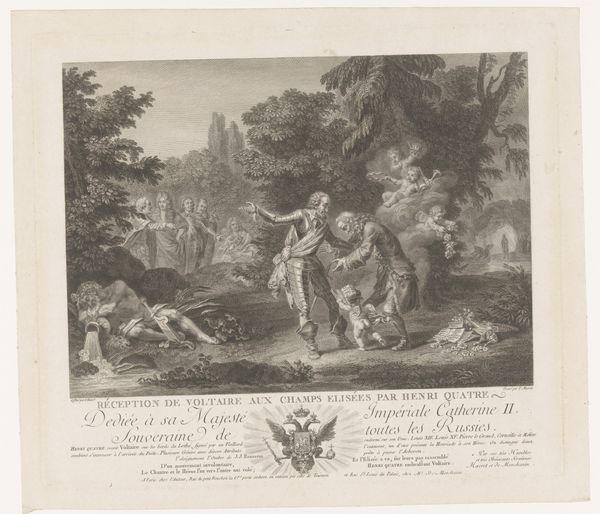
#
photo of handprinted image
#
yellowing
#
aged paper
#
light coloured
#
white palette
#
natural colour palette
#
golden font
#
soft colour palette
#
watercolor
#
historical font
Dimensions: height 426 mm, width 267 mm
Copyright: Rijks Museum: Open Domain
Curator: Looking at this print, “Rest on the Flight into Egypt,” created between 1786 and 1808, one is struck by its devotional tone. It portrays the Holy Family during their exile. Editor: Yes, a quiet scene, almost melancholic. The light seems diffused, creating a hazy atmosphere. Mary and the child are rendered with such gentleness but isolated within the composition. It evokes a sense of vulnerability, but perhaps also defiance amidst forced migration. Curator: It’s attributed to Jean Mathieu and rendered in watercolor; the historical context here is crucial. The artwork reproduces an older composition attributed to Pierre-François Mola from the mid-17th century, placing it within a tradition of reproductive prints that circulated imagery and ideas. These prints often functioned as pedagogical tools, spreading artistic trends and religious narratives to a wider audience. Editor: Right, so not just an artwork itself, but an instrument. Considering its use, I'm curious how audiences at the time responded to its representation of the refugee experience. What assumptions might they have brought to this image of the Holy Family, displaced and resting far from their home? The very title calls attention to its position as a 'rest stop,’ a welcome relief from the toils of their travel. Does this image reflect that idea of welcome in its wider context of reception? Curator: The placement within the "Galerie de S.E. le Duc d'Orleans" speaks to its elite provenance, a fascinating tension given its subject. The Duc's collection would have presented these religious scenes alongside mythological and historical works, shaping public perception of art and religion during this era. How do we account for that? What assumptions does that make about the audience who are viewing such artwork? Editor: That tension is key. Displaying an image about displacement within the collection of someone who likely benefitted from social structures that forced such displacements really requires us to look critically at the circumstances in which these images continue to exist and who controls access to such spaces. Curator: A powerful reminder. I see how the layering of contexts reveals deeper issues of access, privilege, and historical narratives within cultural institutions. Editor: Exactly, seeing this image becomes less about devotional contemplation and more about critically engaging with the complex relationship between art, history, and social justice.
Comments
No comments
Be the first to comment and join the conversation on the ultimate creative platform.

